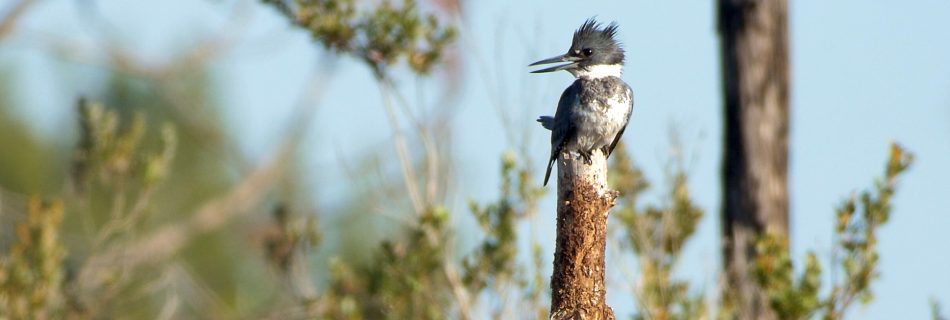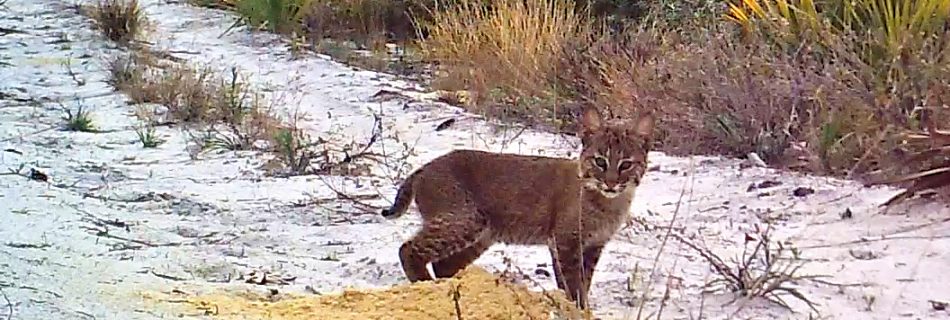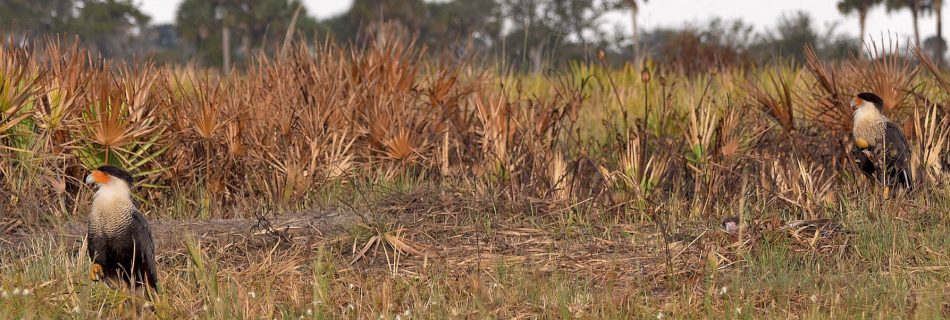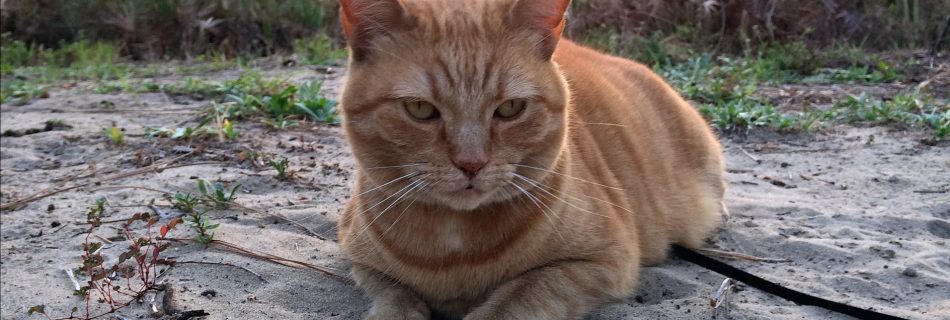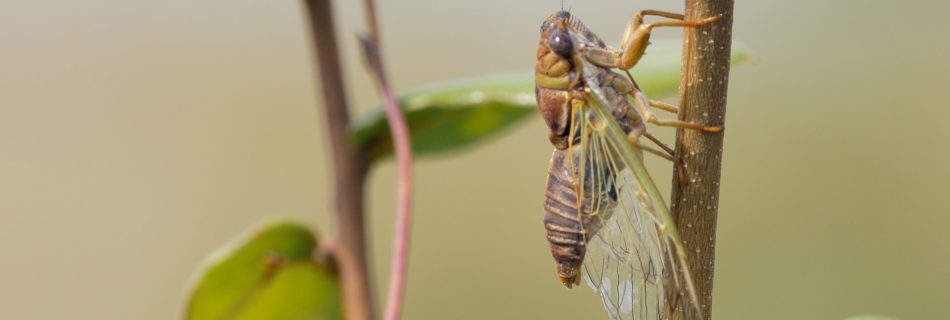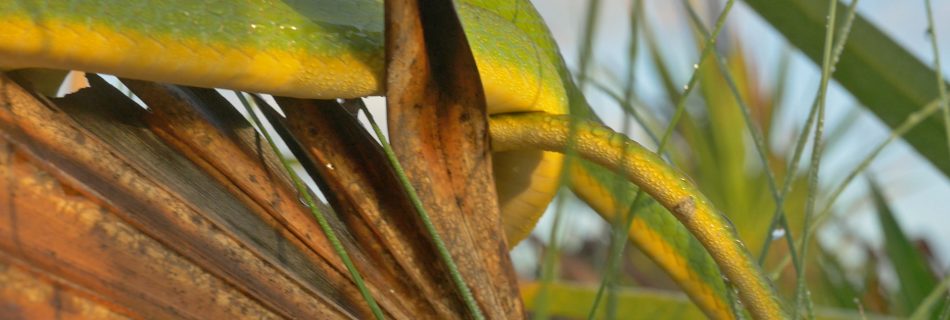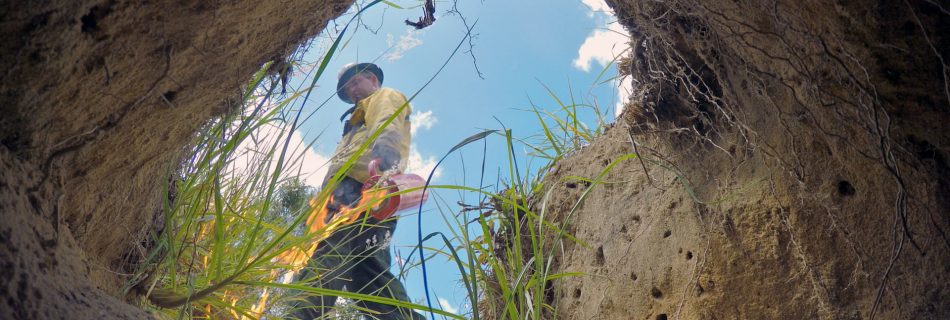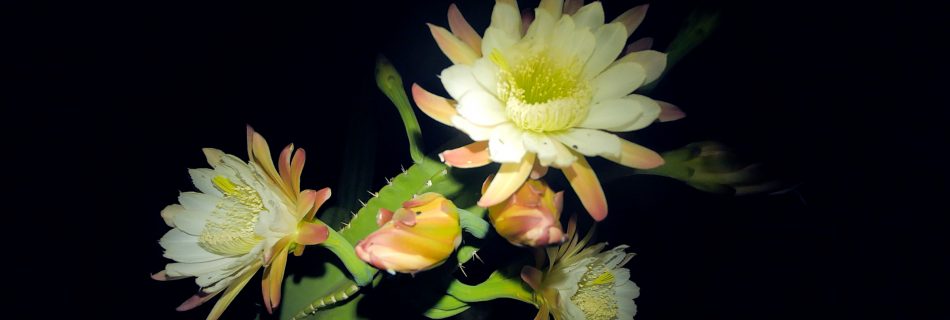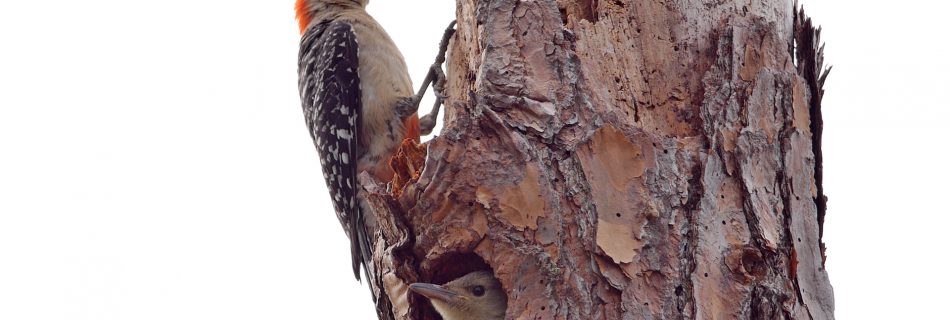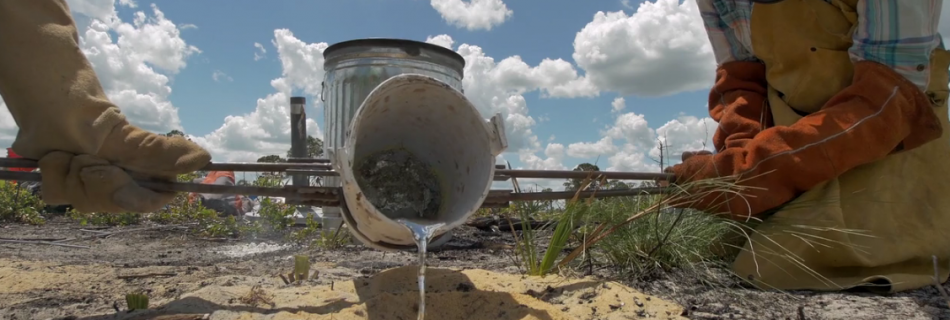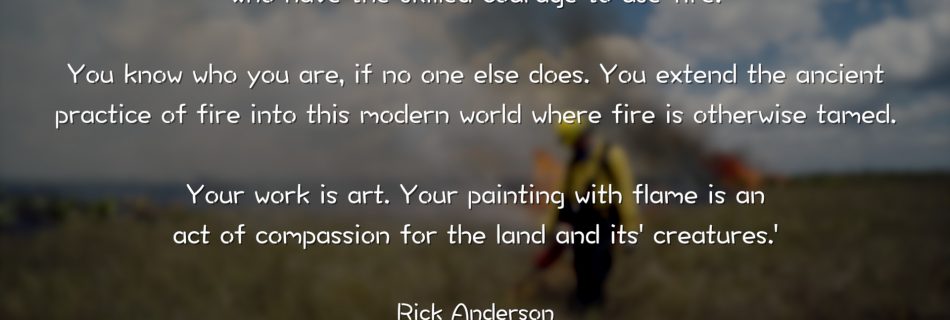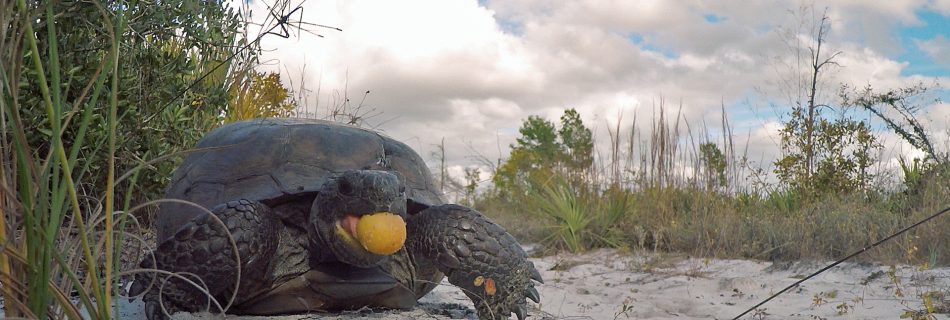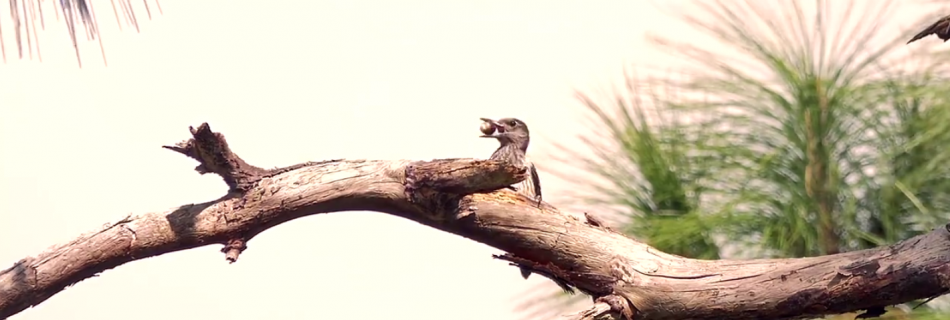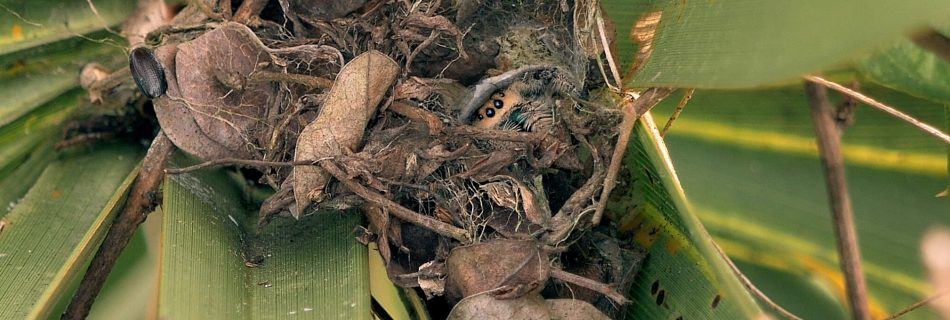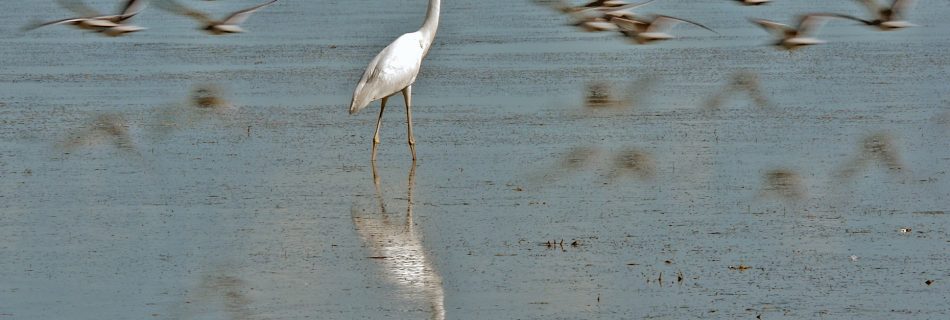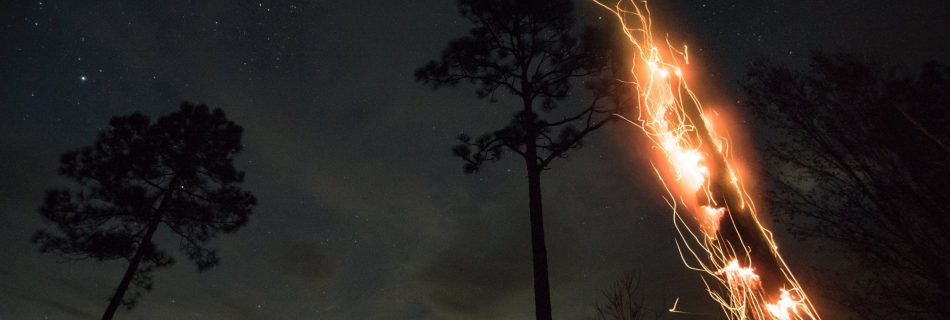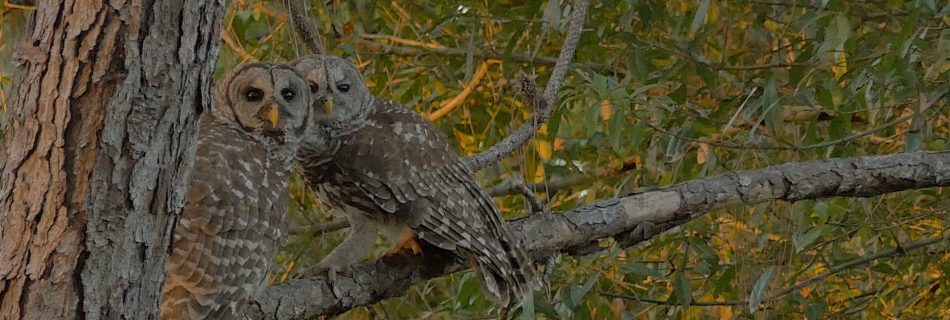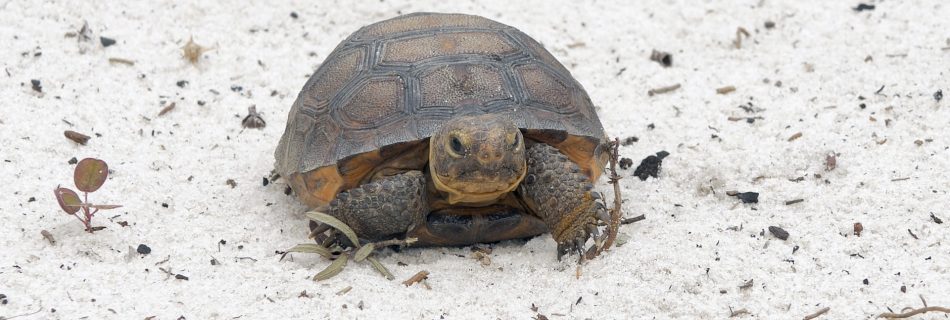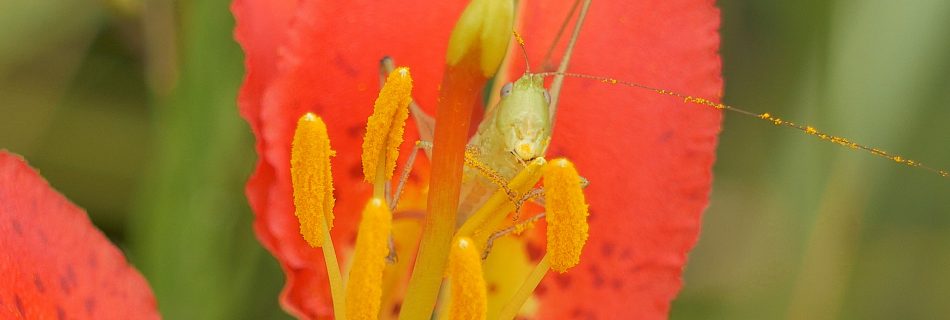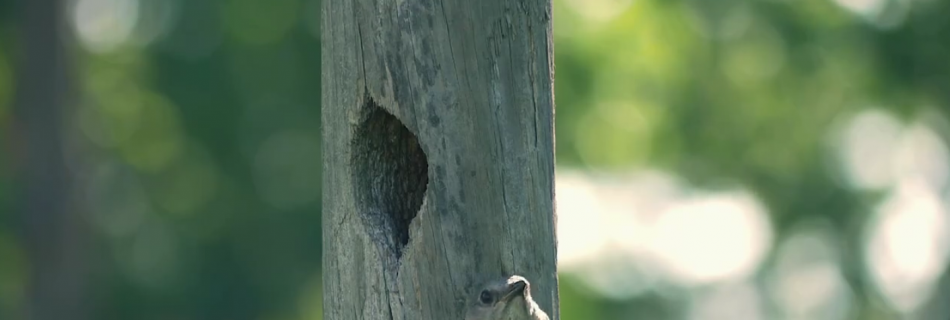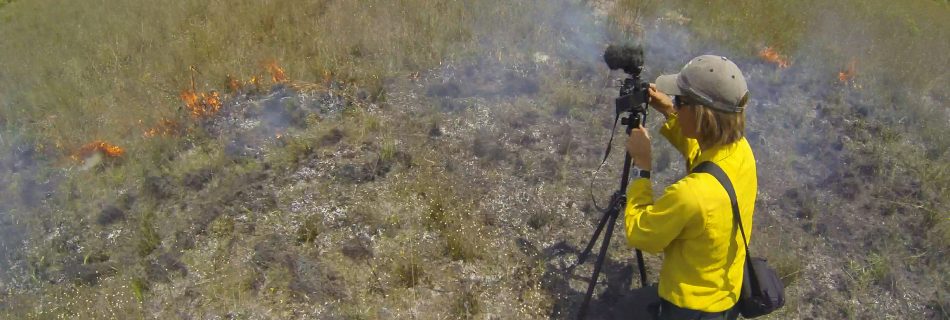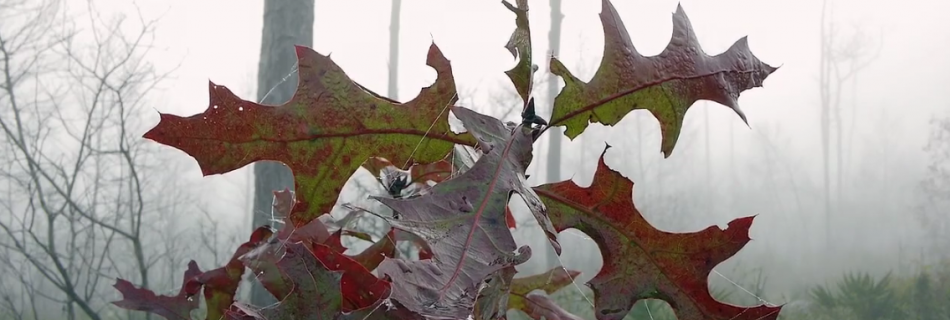Filming Wild Hogs was the mission. We are working on a film about feral hogs brought here by Europeans hundred of years ago. So, Into Nature Films went to a wetland in a patch of Florida scrub to film, as local Florida Crackers call these feral hogs, ‘Pineywoods Rooters’. That was the plan. Dry season was well underway. The water that all the animals need exists in a few swampy depressions in the rolling sandhills. That is where one might find hogs doing their rooting. Just a matter of waiting on this pretty, late December day. The wait was brief. […]
Read MoreArticles by: Into Nature Films
Sandhill Bobkitty
A young Bobcat was caught on motion-sensor camera by Into Nature Films at Archbold Biological Station. This playful and curious ‘Lynx rufus’ lives on some of the highest Florida scrub left on the Lake Wales Ridge of central Florida: A rare Florida sandhill protected at Archbold since 1941.
Read MoreAn Evening with a Central Florida Family
Sleeping, grooming, crying, and hunting. This is the Crested Caracara, one of Florida’s falcons. This bird of Old Florida can be found alongside rural roads, pastures and prairies far away from noisy places. They are subtropical to tropical falcons found from the Southern extremes of the US all the way to Terra Del Fuego. Caracaras are stately birds. When found alongside vultures, their regal plumage sets them apart. Florida Natives used the distinctive tail feather to send a message of war or peace during negotiations. If the white on the tail was painted red, battle was imminent. If no paint […]
Read MoreCat Walking
Living Responsibly with a Beloved Predator: Worldwide large cats such as Siberian Tigers to the Lynx are in trouble. Their numbers plummeting. Many are extinct or extirpated. Some, like our Florida Panther, are hanging on to survival with all their retractable claws. The reasons are the usual suspects of large imperiled animals-habitat loss, overhunting, and conflicts with humans. Wild cats are lethal hunters. We don’t live well with large predators. Perhaps our early history with Saber-tooth Tigers imbedded something in our collective memories. In 2004, the unearthing of a site at Cyprus, in which a cat had been deliberately buried […]
Read MoreCicada Drumbeat
Often heard. Uncommonly seen. It took one of the larger cicada species for this bumbling biped to finally see and film them. Out of 19 known cicada species in Florida, this is probably a Southern Resonant Cicada (Neotibicen resonans). You can identify cicadas by the male’s call. If you get too close, this species lifts off like a mini shuttle into space. Strong fliers. Such a little animal is sure noisy. Cicadas produce some of the loudest sounds possible by an insect. Males vibrate special membranes called timbals attached to muscles in their abdomen up to 400 times per second […]
Read MoreThe Beauty of a Rough Green Snake
The human fear of snakes is learned, or culturally conditioned. Humans are not born with a fear of snakes. With our large brains and forward facing eyes, we are able to sense and respond to snakes quickly. However, fear is learned from experience such as parents modeling fear behaviors to their children (see link below). Good thing we are not blinded by fear. Otherwise, we could not appreciate the beauty of this Rough Green Snake. Harmless, still and beautiful, the color of palmetto. The snake blends into a Saw Palmetto in the Florida Dry Prairie at sunrise. It warms up […]
Read MoreTortoise + Bird’s Eye View of Fire
Get a tortoise-eye-view and bird’s-eye-view of a prescribed fire in rare Florida scrub sandhill filmed recently by Into Nature Films at Archbold Biological Station. This footage is part of a larger film project featuring the amazing conservation story of Red Hill entwining Gopher Tortoises, special people, fire, and science.
Read MorePeruvian Apple Cactus: South America to Everglades
This Peruvian Apple Cactus (Cereus repandus) originates in South America. This spiny green cactus was propagated in Arizona and brought to Florida as a beloved family member. It is living beautifully in the subtropical Flatwoods of the northern Everglades. A slow colonizer, this immigrant is unlikely to invade native ecosystems here in Florida. It’s large showy flowers appear every summer to the delight of diurnal and nocturnal insects. Nectar-feeding bats are native pollinators not found in Florida. Humans have been rearranging the plants and animals on Earth for millennia. Turns out we are pretty awesome at transforming landscapes as detailed […]
Read MoreRed-bellied Woodpecker Ode to Fathers
An ode to Fathers from Archbold Biological Station filmed, edited, and written by Into Nature Films. This Red-bellied Woodpecker father is doing his best to raise the next generation in the pine forest of Red Hill at Archbold Biological Station. Watch the nestling poke its head out and demand a snack. Finally, Dad appears with fresh seeds for his little one. Then, the ever protective father perches on top of the snag while the nestling looks out the window. Happy Father’s Day.
Read MoreTrapping Trap-Jaws
One week ago, we knew nothing about Trap-jaw Ants. We did not even know that we knew nothing. Like many small, nocturnal, burrowing animals of the Florida scrub, we had walked unknowingly around many Trap-jaw Ant colony entrances. Now, after spending time with ant researchers Kim Drager and Dr. Adrian Smith at Archbold Biological Station last Sunday, we know a tiny bit about this incredible invertebrate. This Trap-jaw Ant species is found only on the Lake Wales Ridge of central Florida (Odontomachus relictus). Watch our new, short video of ant researchers in action!
Read MoreBurning Florida
Get a glimpse into a beautiful fire on the Florida Dry Prairie from up high to down low. ‘This short film is dedicated to the people who have the skilled courage to use fire. You know who you are, if no one else does. You extend the ancient practice of fire into this modern world where fire is otherwise tamed. Your work is art. Your painting with flame is an act of compassion for the land and its’ creatures.’ Rick Anderson
Read MoreClose Encounters of the Tortoise Kind
Into Nature Films was thrilled to film a Gopher Tortoise, a threatened turtle in Florida due to habitat loss, eating a Hog Plum fruit and grasses at Archbold Biological Station. This large male tortoise occupies a burrow nearby in low, open sandhill vegetation maintained by fire. Tortoises need open, sunny spots for nesting, easier mobility, and their sun-loving food plants. Stay tuned for a longer project in development featuring the fascinating story between people, tortoises, and fire.
Read MoreBecoming Red Headed: A Beginner Guide for a Pinewoods Woodpeck…
Becoming Red Headed: A Beginner Guide for a Pinewoods Woodpecker 1. When no one is looking, practice the Red Head chatterbox call. 2. Cease all chatter when aerial predators appear. 3. Keep an eye on grown-up Red Heads. They are Pinewoods professionals. They know what to do. Copy them. 4. Get to know all the dead pine trees (snags) in your territory. 5. Hide Fall acorns in secret wood crevices for winter food. Don’t drop them! Remember where you stashed them. You will want them later. 6. Be open-minded with food. Anything goes from insects to fruits, nuts, meat, even […]
Read MoreThe Jumping Spider Spectacular
Humans tend to notice the big animals. But, the little ones are equally spectacular. Sitting quietly in the Florida scrub on New Year’s Day, Into Nature Films captured a leaf litter microcosm in the crown of a palmetto. Watch to the end to see the Jumping Spider close the door to this fascinating world! Filmed at Archbold Biological Station in Venus, Florida. This #fuzzywuzzy is a female Regal Jumping Spider (Phidippus regius).
Read MoreA Day on Florida Bay
Highlights from a recent assignment in Florida Bay. The waters at the mouth of the Everglades are teeming with life. Bottlenose dolphins, stingrays, mangroves, an array of wading birds and more. This video is two minutes from a days work by Into Nature Films.
Read MoreFirecracker Snag
The heart of a dead pine tree without it’s protective bark burns overnight after a beneficial, low intensity fire. Better than the glowing content of a television or smartphone, the primal firework display is mesmerizing. Photography captures longer exposures with more context like the surrounding pine trees, stars, and Saw Palmettos. Videography captures the living motion of combusting pine tissue flying into the night with a crackling soundtrack for a more multi-sensory experience.
Read MoreOwl Spot
I heard a Barred Owl calling in the pineland. An owl neighbor. Who are you? I wanted to know. I went out into half-lit woods to catch a glimpse. Outside the house to mosquitoes and early darkness. I searched the canopies of sapling maple and old pine. To find my feathery friend and life sublime. Under moon and stars in October’s light.
Read MoreSurprise on the Sandhill
Southern Highlands County is the southern extent of the ancient coastline of Florida. Today, the sandy scrub-covered dunes are refuge for dryland plants and animals in a landscape prone to vast wetlands and sea level rise. Two of these creatures were discovered during a recent film production trip for ‘Archbolds Nature Trail’, a virtual video exploring Archbold Biological Station. The adorable Gopher Tortoise hatchling and one of America’s largest snakes, the non-venomous Eastern Coachwhip, persist in their natural habitat now protected by Archbold Biological Station. As in many trips into nature, the route was slow and full of surprises. Watch […]
Read MoreLily Corn on the Cob
Into Nature Film’s Facebook Video ‘Lily Corn on the Cob’ has over 4,000 views and 141 shares breaking the misunderstood trend to only post short, fast-paced content on social media. Two nice and gradual minutes of a katydid grasshopper eating flower pollen. So simple and so beautiful.
Read MoreWild Blue Family
Wild Blue Family is a short and sweet visual poem produced by Into Nature Films.
Read MoreInto Nature Films Awarded Pollination Grant
http://www.huffingtonpost.com/ari-nessel/a-chain-of-connection-thi_b_6207630.html
Read MoreHappy Thanksgiving from Archbold
Archbold Biological Station gives thanks to it’s growing community of Facebook supporters and wishes everyone a Happy Thanksgiving.
Read More